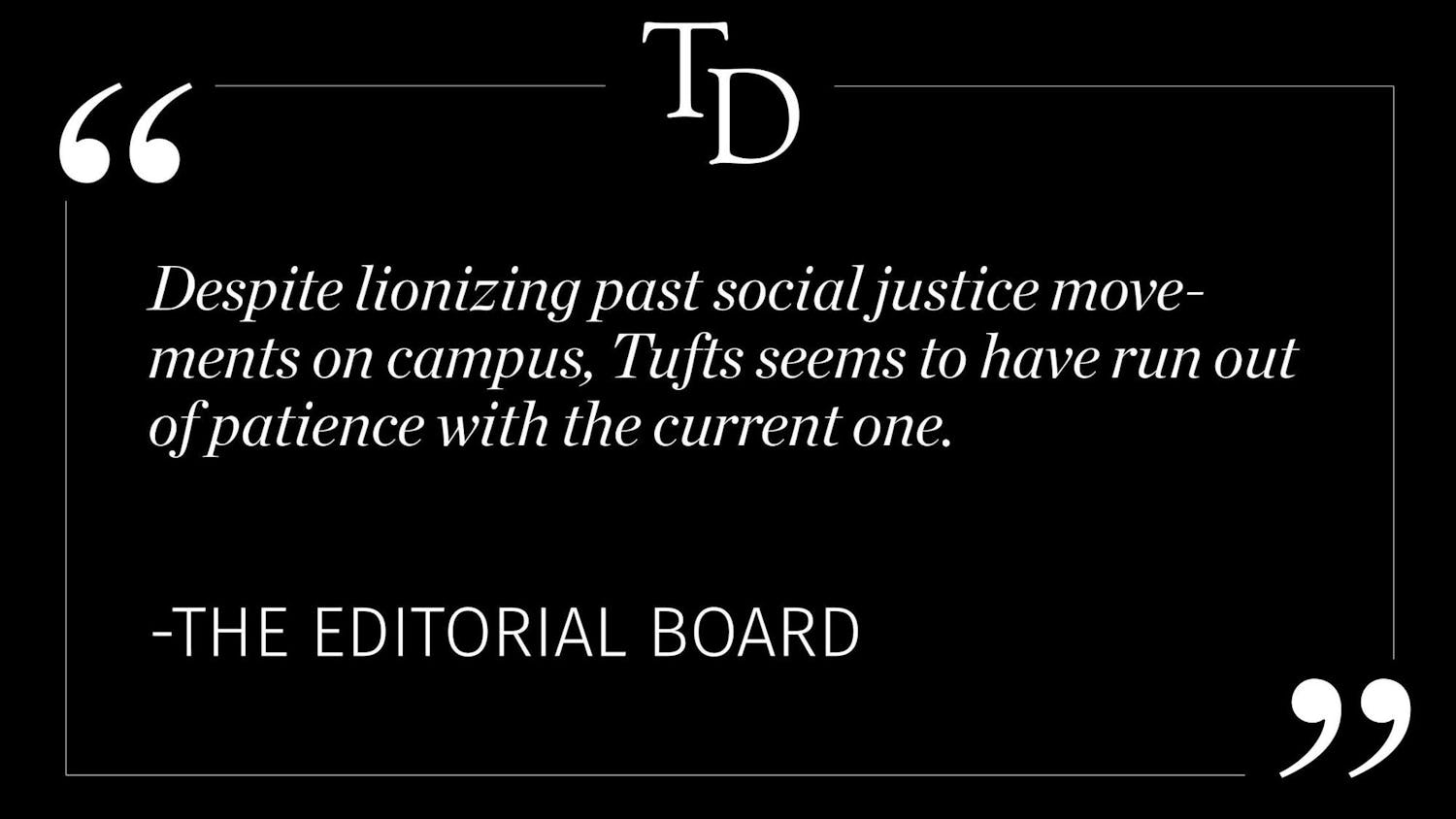Tufts University has longtaken pride in the racial and ethnic diversity of its student populations. Diversity among incoming classes hasincreased steadily over the past several years. Nearly half of students in the Class of 2025, for example,identify as students of color. The value of a diverse student body is indisputable, but a topic often lost within these conversations of diversity is the discussion of faculty diversity.
While Tufts has made commendable efforts in selecting a more diverse body of new students, statistics show that the diversity of the faculty lags far behind. Despitenearly half of the total student population identifying as people of color, recent reports show that around70% of faculty identify as white. Reports show that this trend of disparity between faculty and student diversity remains present in colleges and universities throughout the nation. This trend begs the question of how not only students are affected in their educational environments but also how academia is affected as a whole.
The inclusion of a more diverse student body is often aimed atenriching learning experiences and providing educational and professional advancement opportunities for students of various backgrounds. While there are clear cultural, educational and professional advantages to having student bodies which comprise a broad range of racial demographics, the quality of educational experiences for students of color may beimpeded when the demographics of professors and other faculty fail to provide the same level of representation.
Layla Noor, a sophomore at Tufts, commented on her experiences as a Black student on campus.
“While my social experiences have been enriched by diversity on campus, my educational experiences have not been the same,” Noor wrote in an email to the Daily. “Out of over a dozen courses I've taken that have been taught by faculty at Tufts, I have only had one professor of color. And, as a Black student, none of the same race as me.”
One of the greater issues with maintaining a majority-white faculty even as student populations become more diverse is the potential inability of professors to fully grasp the experiences and contexts of their students’ perspectives. While there are endless differences and intersectionalities in the way people experience the world, there is a part of the experience of being a person of color which a white person can never fully understand.
Noor expressed her feelings of discomfort as one of just a few students of color in a class taught by a white professor.
“There have been numerous times when I have felt uncomfortable with a professor’s language as they've talked about Black people," Noor said. "I have had discussions about race in my class recitations, as one of two students of color being taught by a white professor, and had our personal experiences only met from an academic perspective."
While many professors may do their best to understand the issue in an academic, empathetic or objective context, the lived experiences of people of color are something which no amount of intentionality, awareness and education can bring to a white professor. Many students of color may feel discomfort or frustration knowing their voices and experiences are not necessarily understood throughout all levels of the university.
Additionally, the lack of representation for students of color among professors at their own university sends a message of implicit exclusion which maydiscourage students of color from pursuing careers in academia. It’s imperative that individuals from a variety of backgrounds are included within academia, not only for the sake of support and representation, but also for the enrichment of each respective field with the wealth of broader perspectives.
While university administration and professors are responsible for recognizing these factors within the institutions they lead, this article is not meant to place blame on any one individual. Rather, it aims to call into question the systems which have allowed these racial disparities to persist in academia and pushes for more intentional interrogation of the effects this has on the community. Building on this understanding, change must be enacted from within university administration.
The administration must better reflect its support for students of color within faculty demographics. As Noor puts it, this means “creating not only safe places for students of color, but classrooms where they feel seen and understood in a way they wouldn't if only ever exposed to white faculty.” Notably, the university has developed a compositional diversityworkstream with the goal of improving hiring practices. These recent efforts for increased diversity are commendable, but it is important that they result in tangible improvements for students of color on campus. Administration members bear the responsibility of pushing for even greater diversity of Tufts faculty throughout the hiring process to build a more representative and productive academic environment for students and professors alike.





